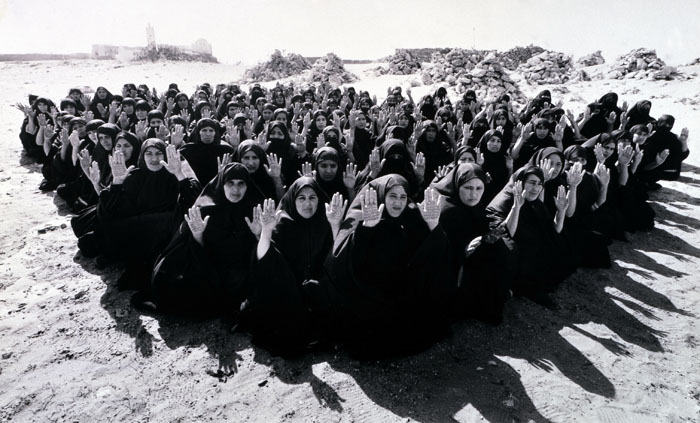
Neshat’s 1999 work, “Rapture,” is one of the 62 pieces on display at the “Retrospective on Shirin Neshat” at the National Museum of Modern and Contemporary Art, Seoul (MMCA). (photo courtesy of Gladstone Gallery, New York and Brussels)
There’s an exhibition underway at the National Museum of Modern and Contemporary Art, Seoul (MMCA), dedicated to the Iranian artist and film maker Shirin Neshat.
Kicked off on March 1, the “Retrospective on Shirin Neshat,” part of the MMCA’s Asia Project, is showing fifty-years of the Iranian artist’s creative activities that have focused on one universal issue: human rights and the freedom of women.
The exhibition features a total of 62 of Neshat's works, including 53 photographs and nine video pieces. Among them are two series of photographs, “Women of Allah,” and, “The Book of Kings,” the famous black-and-white video trilogy comprising “Turbulent,” “Rapture” and “Fervor,” as well as the film “Women Without Men,” which all portray the oppressed life and freedoms that face Muslim women.
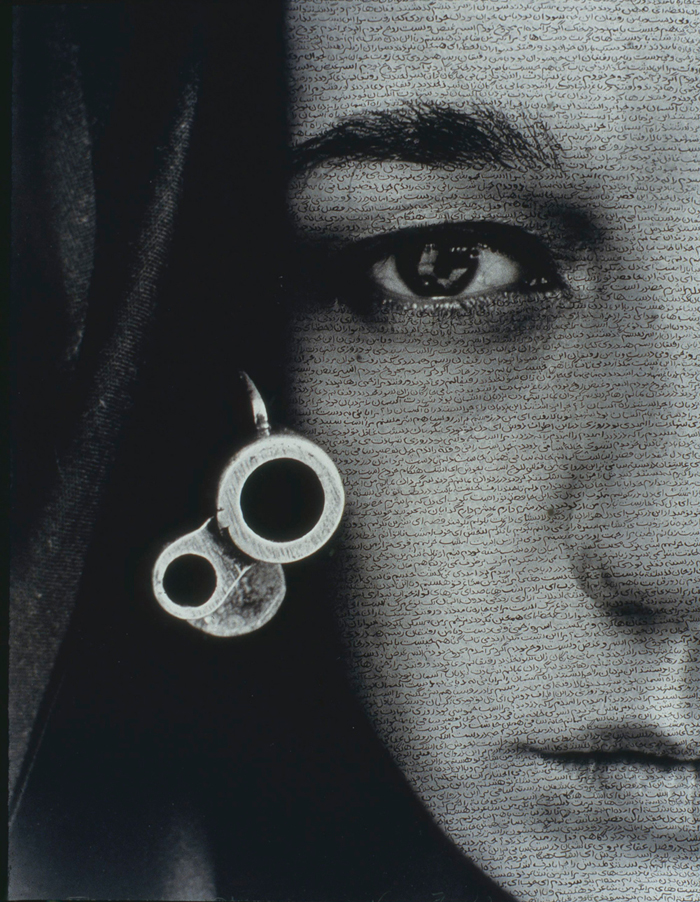
Neshat’s “Speechless” is part of her 1996 series of photographs, “Women of Allah.” (photo courtesy of Gladstone Gallery, New York and Brussels)
Some of her exhibits depict a Muslim woman holding a shotgun and wearing a hijab, a traditional headscarf, and another shows a different woman, dreary-eyed, looking into the camera, with the threatening point of a gun protruding from her black head covering.
Her works explore the dichotomous image of Muslim women: powerlessness and powerfulness; sacrificing and fighting for their rights.
What distinguishes Neshat from others is the way she writes dense poems in Persian with a black brush on the white part of black-and-white photographs. Such written messages and images are Neshat’s objective: to raise awareness of the repression facing Muslim women and their pursuit of freedom.
“Despite the difference in cultures, Korea and Iran have a lot in common, I think,” said Neshat about her Seoul exhibition. “I believe that my works of art embrace political and feminist issues, ones that, I am sure, evoke sympathy from Korean audiences, too.”
She continued to say that, “They might also get us to realize that we have many things in common, such as a rich tradition and history. I’ve often used the traditional handwriting style of Islamic art. That’s why I have a keen interest in traditional Korean calligraphy.”
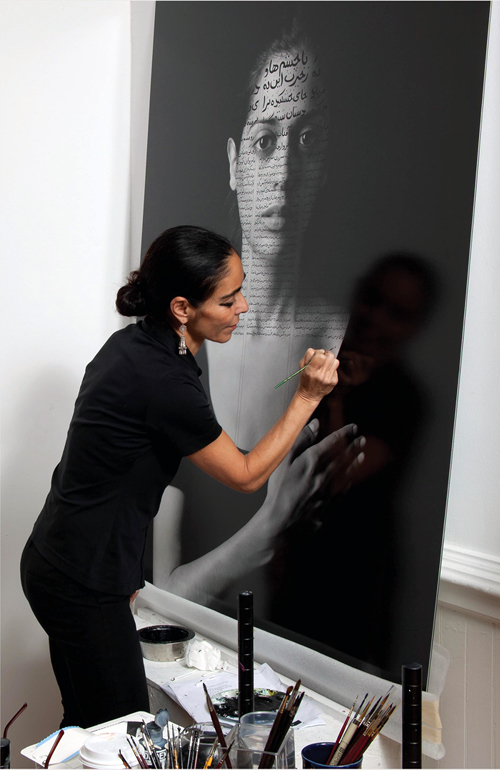
Shirin Neshat writes a poem onto one of her black-and-white photographs. (photo courtesy of Gladstone Gallery, New York and Brussels)
Born in 1957 in Iran, Shirin Neshat moved to the U.S. in 1974 and studied painting and theory of art at the University of California, Berkeley. For many years, she ran the Storefront for Art and Architecture gallery in Manhattan together with Korean architect Kyong Park.
Neshat remained quite unnoticed until her famous series of photographs, “Women of Allah,” came to light in 1996. In 2000, she was awarded the grand prize at the Gwangju Biennale, an international arts festival.
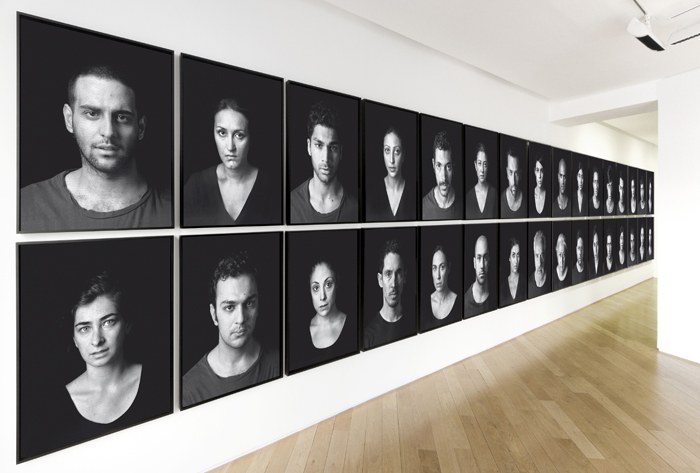
Shirin Neshat’s famous series of photographs, “The Book of Kings,” in 2012. (photo courtesy of Gladstone Gallery, New York and Brussels)
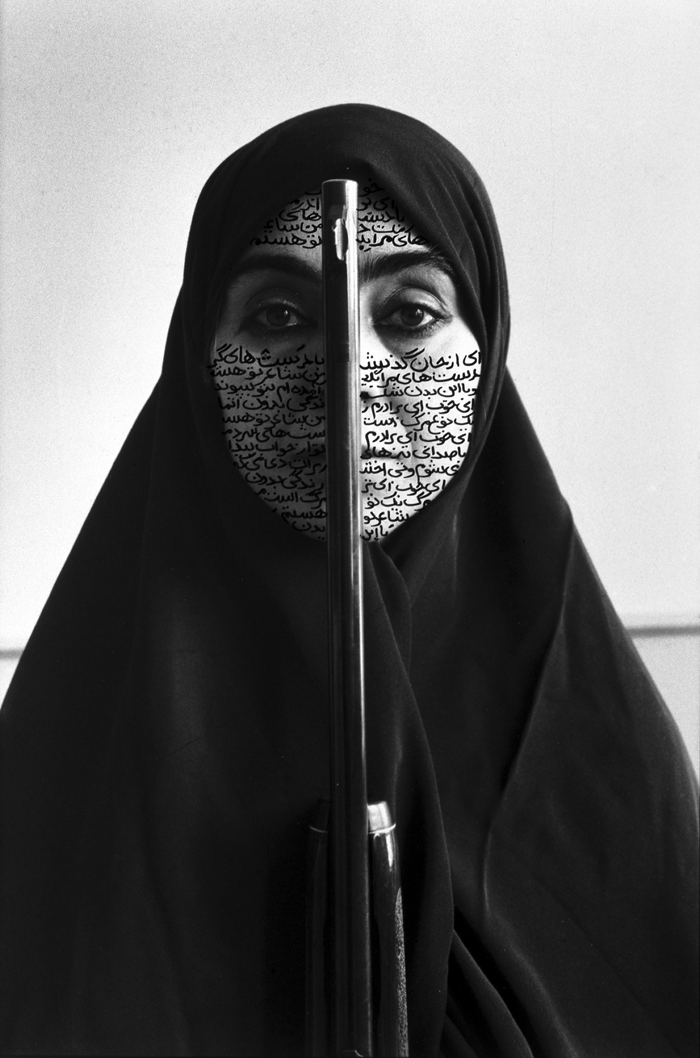
“Rebellious Silence,” one of Shirin Neshat’s works from 1994, portrays a Muslim woman covered, except for her face, by a hijab and holding a shotgun. (photo courtesy of Gladstone Gallery, New York and Brussels)
The retrospective continues until July 13 at the MMCA Seoul, in Jongno District, Seoul.
By Sohn JiAe
Korea.net Staff Writer
jiae5853@korea.kr